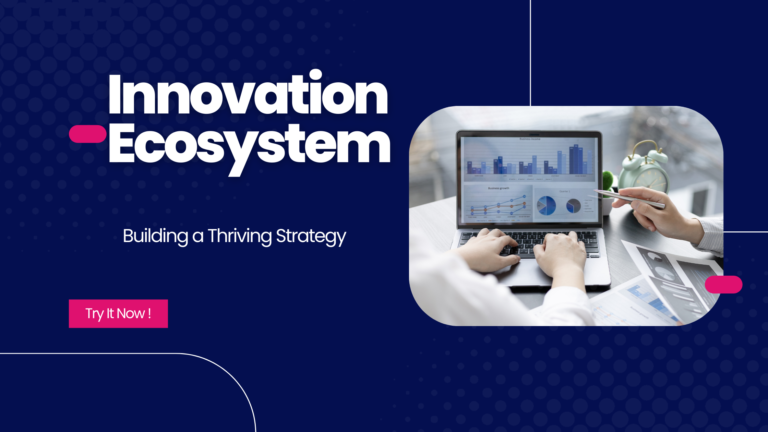Are you tired of spending countless hours manually testing your software? Have you ever wondered how much more efficient your testing process could be with automation? Look no further, because the power of automation in software testing is here to revolutionize the way testers develop and test applications and programs using various programming languages.
Automation testing refers to the use of automated test scripts to perform tests that would otherwise be done manually. It is an essential part of modern software development applications, as it allows testers to quickly and accurately execute unit tests, integration tests, load tests, penetration tests, and more. With the help of automation programming languages, developers can reduce their time-to-market while improving quality and reliability. Automation skills are becoming increasingly important for software developers and testers alike.https://onetechnify.com/index.php/2023/06/05/disruptive-innovation-examples-15-transformative-industry-shakers/
However, as with any new technology or process, there are benefits and challenges associated with automation testing for software testers. Automation testing can greatly improve software quality by reducing the need for manual operations and allowing for faster identification of bugs during software development.
So why wait? Join us testers on this journey as we delve deeper into the world of software automation testing – from learning about programming languages to exploring test execution techniques – all while adhering to best practices rooted in software engineering principles. Enhance your skills and understanding of the development process by taking our courses.
Benefits of Unlocking the Power of Automation in Software Testing

Increased Efficiency and Productivity
One of the most significant benefits of automation in software testing is increased efficiency and productivity for testers. Automated testing tools can run tests much faster than manual testing, allowing for quicker identification and resolution of bugs in applications. This means that developers, who are well-versed in various programming languages, can focus on creating new features instead of spending time manually running tests. Automated testing allows for parallel test execution, which further increases efficiency and reduces the time required for testing throughout the development process.
Consistency and Accuracy in Test Results
Another benefit of automation in software testing is consistency and accuracy in test results. Automated tests are conducted by testers with the necessary skills in programming languages, ensuring that each test is conducted consistently across different applications, releases or builds. This eliminates the possibility of human error, which can occur during manual testing due to fatigue or oversight.
Cost Savings for Businesses
Automation in software testing also brings cost savings to businesses. While the initial investment may be high, automated testing saves money over time by reducing the need for manual testers and increasing efficiency. Automated tests are reusable, meaning they can be run repeatedly without additional costs. This requires skills in programming languages and development, as well as the ability to test on various devices.
Ability to Test More Frequently
Automated testing, also known as software automation, enables software testers to test more frequently than with manual methods. This is because automated tests can be executed quickly and efficiently without requiring human intervention. As a result, automation engineering teams can perform continuous integration (CI) and continuous delivery (CD), delivering updates more frequently with higher quality. Additionally, API automation can be easily incorporated into the automated testing process, further improving efficiency and accuracy.
Understanding AI’s Role in Automation Testing
Explanation of Artificial Intelligence (AI)
Artificial intelligence (AI) refers to the simulation of human intelligence processes by machines, especially computer systems. These processes include learning, reasoning, and self-correction. Software testing can benefit from AI’s ability to automate repetitive tasks like regression and performance testing. This allows testers to focus on more important aspects of their work instead of wasting time on mundane tasks. Automation engineering and API automation are also important areas where AI can be applied to improve efficiency. Additionally, individuals interested in learning more about AI in software testing can enroll in Automation University.
Benefits of Using AI in Automation Testing
There are several benefits to using AI in automation testing for software testers and software quality. AI can help improve software engineering principles and software development by providing efficient and accurate testing capabilities.
- Faster and more accurate testing: AI-powered tools can execute tests faster than software testers while also reducing errors. With software automation and automation engineering, the process can be made even more efficient. Additionally, API automation can be utilized to further streamline the testing process.
- Cost-effective: Software automation through automated testing reduces the need for manual labor by software testers, which saves time and money in software engineering. Additionally, API automation can further optimize the testing process.
- Increased test coverage: With software automation and API automation, software testers can use ChatGPT to test a larger number of scenarios than with manual testing.
- Improved reliability: Automation testing tools enable an automation testing engineer to conduct API automation testing more efficiently, resulting in a more reliable software automation testing course that is less prone to human error.
Examples of AI-Powered Tools for Automation Testing
There are several AI-powered tools available for automation testing, including those that support API testing and ChatGPT. Here are some examples:
- Testim.io: This automation testing tool uses machine learning algorithms to create stable and maintainable tests that automatically adapt to changes in your application. Whether you’re an automation testing engineer looking for a software automation testing course, or need to perform API automation testing, Testim.io has got you covered.
- Applitools: This tool uses visual AI technology to detect visual bugs in your application across different devices and browsers. As an automation testing engineer, you can rely on Applitools to provide accurate results with its test automation frameworks and automated test scripts. Additionally, Applitools offers API automation testing to help streamline your testing process.
- Test.ai: This tool uses an intelligent agent that interacts with your application like a real user would, allowing it to identify issues that traditional automation tools might miss. Additionally, it supports API testing, end-to-end testing, and load testing. For chatbots, Test.ai can be integrated with ChatGPT for efficient testing.
- Mabl: This automation testing tool uses machine learning algorithms to analyze your software application’s behavior over time and automatically update your tests accordingly. As an automation testing engineer, you can rely on Mabl for efficient API automation testing.
Exploring ChatGPT and Its Use in Automation Testing
ChatGPT is an AI-powered language model that can generate human-like text based on the input provided. It uses a deep learning algorithm to understand the context of the input and produce relevant output. ChatGPT has been trained on a massive amount of data, making it capable of generating text that is coherent, informative, and engaging. In addition, it can be integrated with API automation testing and automated test scripts to enhance the accuracy of the output. If you’re looking for an API testing tool or automation testing tool, ChatGPT is a great choice.
How ChatGPT Can Be Used for Automated Chatbot Testing
One of the most significant advantages of using ChatGPT for automation testing is its ability to simulate real-world conversations with chatbots using an API. By providing a set of inputs to the model through the API, it can generate responses that mimic those that a human would provide when interacting with a chatbot.
To use ChatGPT for automated chatbot testing with API automation, you need to follow these steps:
- Define test scenarios: Before you start API automation testing your chatbot, you need to define various scenarios that you want to test. For example, you may want to test how your chatbot responds when users ask common questions or how it handles complex queries.
- Prepare input data: Once you have defined your test scenarios, you need to prepare input data that simulates user interactions with the chatbot. This could include text messages or voice commands. As an automation testing engineer, you can utilize various automation testing tools to perform API automation testing. To make the process more efficient, it is important to choose the right API testing tool for your project’s needs.
- Train the ChatGPT model on your input data using automated test scripts and automation testing tools to ensure that it can learn how to respond appropriately in various test cases, including API automation testing.
- Test your chatbot: Finally, you can use the trained model along with automation testing tools to perform thorough automation testing of your chatbot. This will help ensure that your chatbot responds appropriately to user input and meets the desired requirements. As an automation testing engineer, you can also perform API automation and testing to ensure seamless integration with other systems. By evaluating the responses of your chatbot to different inputs, you can identify any issues and make necessary improvements for optimal performance.
Advantages and Limitations of Using ChatGPT for Automation Testing
The primary advantage of using ChatGPT for automation testing is its ability to simulate real-world conversations accurately. This makes it an excellent tool for testing chatbots and other conversational interfaces with the help of API integration.
However, there are also some limitations to using ChatGPT for automation testing, especially when it comes to its API integration.
Comprehensive Guide to API Automation and Testing

Definition and Importance of API Testing
API (Application Programming Interface) testing is a type of software testing that involves validating the functionality, performance, and security of an application’s APIs. APIs are the building blocks of modern applications, allowing different software components to communicate with each other. Therefore, it is essential to test these APIs thoroughly to ensure that they work as intended.
API testing helps identify issues before they become critical problems for end-users. For example, if an API returns incorrect data or fails to respond within a specific time frame, it can cause significant problems for the application’s users. By performing regular API tests, developers can catch these issues early on and fix them before they impact end-users.
Types of API Tests
There are several types of API tests that developers can perform to validate their application’s APIs, including automation testing tools.
Unit Tests
Unit tests focus on testing individual functions or modules within an application. These tests help developers identify bugs early in the development process, when they are easier and less expensive to fix. Additionally, automated API testing can ensure that the API endpoints are functioning properly.
Functional Tests
Functional tests evaluate how well an API performs its intended function. These tests, conducted using automation testing tools, check whether the API behaves as expected when given specific inputs.
Load Tests
Load tests assess how well an API performs under high loads. By simulating a large number of requests simultaneously, developers can identify potential bottlenecks or performance issues. Automation testing tools can be used to optimize and streamline the load testing process.
Security Tests
Security tests are conducted to verify if an application’s APIs are impervious to external threats, including hacking attempts or unauthorized access. These tests are performed using specialized testing tools.
Best Practices for API Automation Testing
To unlock the power of automation in software testing using APIs, here are some best practices that developers should follow:
- Start with comprehensive planning: Before starting with automation testing, it is crucial to create a detailed plan outlining what needs to be tested and how it will be done, including API testing.
- Use proper tools: There are many tools available for automating API testing; choose one that suits your needs and budget.
Key Tools for API Automation and Testing
Popular Automation Testing Tools for API Testing
Automation testing tools are crucial in developing reliable software products. Among the most popular automation tools used in software testing, Postman, SoapUI, and JMeter stand out as the top picks for API automation/testing.
Postman is a widely-used testing tool that enables developers to test APIs by sending requests like GET, POST, PUT, and DELETE. It also helps in creating test scripts and automating them using its collection runner feature. With Postman’s user-friendly interface and flexibility, it has become the go-to testing tool for teams of all sizes.
SoapUI is another popular tool that allows testers to quickly create functional tests for API automation. Its drag-and-drop interface makes it easy to create test cases without needing to code manually. SoapUI also supports automated testing through its integration with Jenkins or other CI/CD tools.
JMeter is an open-source tool that provides extensive support for load testing APIs. It can simulate multiple users accessing an API simultaneously and measure the response times of each request accurately. JMeter can be integrated with other automation frameworks, such as Selenium, to perform end-to-end testing.
Features That Make These Tools Useful
All three tools come with unique features that make them useful in their own way, including automated test scripts, test data, test cases, and test automation frameworks.
- Postman: User-friendly interface for API testing; ability to save requests and test scripts; supports various authentication methods; offers team collaboration features for API automation testing tools.
- SoapUI: Supports API automation and test automation; has drag-and-drop functionality for creating test scripts; allows testing of RESTful web services and SOAP web services; and has built-in assertions to validate test data.
- JMeter: Open-source availability; ability to simulate heavy loads on servers; flexible scripting language support for test scripts and test automation, with the option to incorporate test data and perform api automation.
Comparison Between Different Tools
When deciding which tool to use for API automation/testing, it’s essential to consider each one’s strengths:
- Postman: Ideal for small-to-medium-sized projects due to its user-friendly interface for creating test scripts, performing API automation, and enabling test automation.
- SoapUI: Best suited for complex projects requiring extensive customization.
- JMeter: Perfect for testing APIs with heavy loads and measuring response times.
Leveraging the Power of Automation and AI in Software Testing
The Role Played by Artificial Intelligence (AI)in Software Development
Artificial Intelligence (AI) has revolutionized software development. It is a technology that enables machines to simulate human intelligence, which includes the ability to learn, reason, and self-correct. AI tools can be used to automate repetitive tasks, such as testing, freeing up software testers and automation testing engineers to focus on more complex tasks.
How Combining AI with Automated Software Helps Improve Quality Assurance
Automation testing is an essential part of software testing. It helps improve test coverage and reduce the time required for functional testing. When combined with AI tools, automation engineering becomes even more powerful. AI algorithms can analyze vast amounts of data generated during test runs and identify patterns that humans may miss. This means that defects can be detected earlier in the software development lifecycle, reducing costs associated with fixing them later.
Future Prospects on How This Combination Will Help Shape the Future
The future of software engineering lies in automation and AI technologies. As software applications become more complex, traditional manual testing methods will no longer be sufficient to ensure quality assurance. Automation testing coupled with AI tools will help meet this challenge by providing faster feedback on code changes while maintaining high levels of quality.
One example of how this combination is shaping the future is through the use of validation testing. Validation testing involves using machine learning algorithms to predict how a piece of code will behave under different conditions based on previous test results. This approach helps identify potential issues before they occur in production environments.
Another way this combination is shaping the future is through automation universities that offer courses in automation engineering and artificial intelligence for software testers and engineers alike.
Conclusion: The Power of Automation in Software Testing
In conclusion, unlocking the power of automation in software testing is crucial for efficient and effective testing. By automating repetitive tasks, you can save time and resources while improving the accuracy and reliability of your testing process.
AI plays a significant role in automation testing, allowing for more advanced and intelligent test scenarios. ChatGPT is one such tool that leverages AI to generate natural language responses for chatbot testing.
API automation and testing are also essential components of software testing. With comprehensive guides and key tools like Postman, SoapUI, and Selenium WebDriver, you can streamline API testing processes.
By leveraging the power of automation and AI in software testing, you can achieve faster feedback cycles, reduce manual errors, increase test coverage, and ultimately release higher quality software products.
Call-to-action: Start exploring different automation tools today to unlock the full potential of your software testing process.
FAQs
Q1: What are some benefits of automation in software testing?
A1: Automation in software testing offers several benefits such as increased efficiency, improved accuracy and reliability, faster feedback cycles, reduced manual errors, increased test coverage, cost savings on resources over time.
Q2: How does AI play a role in automation testing?
A2: AI plays a significant role in automation testing by enabling more advanced and intelligent test scenarios. It allows for natural language processing (NLP) for chatbot or voice assistant tests or identifying anomalies through machine learning algorithms.
Q3: What is ChatGPT used for in automation testing?
A3: ChatGPT is an AI-powered tool that automates api automation and generates natural language responses for chatbot or voice assistant tests. It helps automate the process of generating large amounts of training data to improve chatbots’ performance over time.
Q4: What is API automation & why is it important?
A4: API (Application Programming Interface) Automation involves testing the API endpoints for functionality and performance. It is important because it helps ensure that the software’s building blocks are functioning correctly, which can prevent issues in other areas of the software.
Q5: What are some key tools for API automation & testing?
A5: Some popular tools for API automation and testing include Postman, SoapUI, Selenium WebDriver, Rest-Assured, JMeter, etc.
Q6: How does leveraging automation and AI improve software quality?
A6: By automating repetitive tasks and utilizing AI to identify anomalies or patterns in data, you can reduce manual errors and increase test coverage. This leads to faster feedback cycles and ultimately results in higher quality software products.
Q7: Can automation completely replace manual testing?
A7: While automation can significantly reduce manual effort in testing processes, it cannot completely replace manual testing. Manual testing is still necessary to ensure usability, accessibility, and other aspects of user experience that cannot be automated.
Q8: What are some potential drawbacks of relying too heavily on automation in software testing?
A8: Imagine being able to run hundreds of tests in a matter of minutes, freeing up your time to focus on more important tasks.






